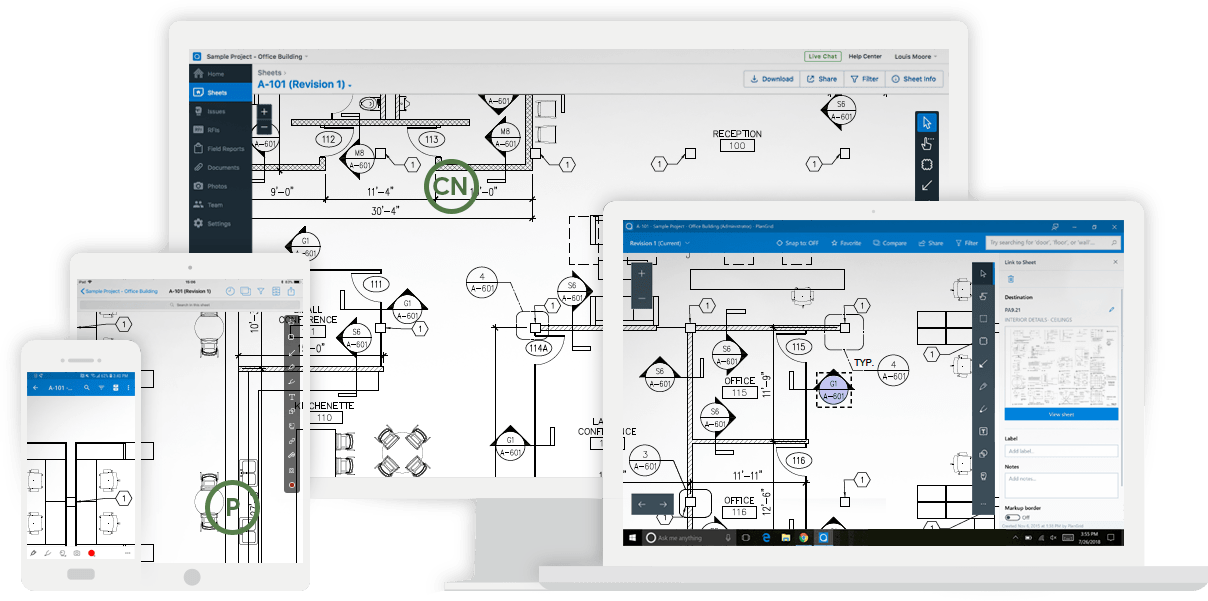High quality formwork is often fundamental to a construction project’s success – whether it’s delivering sturdy foundations for critical infrastructure or creating architectural triumphs like the Sydney Opera House.
But the complexity and precision of formwork leaves firms particularly susceptible to issues on the jobsite. Inaccurate and outdated information, or simply poor communication, can be barriers to delivering work that’s on schedule and right the first time.
This is an issue across the construction industry as a whole; poor data and communication cost firms in Australia and New Zealand $8.4bn in rework last year. But for formwork businesses especially, these problems can cut deep into profit margins and damage relationships with key contractors.

By using mobile digital tools on the jobsite, formwork businesses can improve their operations, deliver an improved service to clients and set themselves up to deliver even more complex and interesting projects in the future.
Mobile technologies can moreover act as a competitive differentiator for formwork businesses.
Challenges on the jobsite
Formwork businesses face significant pressures on the jobsite. Delivering high quality work can depend on intense coordination with concrete contractors, detailed fabrication or shop drawing processes and careful collaboration with many other trades on the jobsite. And of course, with tight turnaround times, operational excellence is critical to profit margins.
But sharing information on the jobsite is one of the biggest challenges facing construction firms as a whole. Looking for project information is the biggest source of wasted time on projects in Australia ad New Zealand; meanwhile, poor communication, delays receiving information and doubts about its accuracy are the most common reasons for tasks taking longer than expected on building projects.
For contractors, sharing information between multiple subcontractors can involve distributing huge volumes of paper, or uploading documents to multiple technology platforms, such as email, DropBox or back office tools. When projects are frequently subject to changes from the client, scheduling delays, materials shortages or simply unforeseen circumstances like poor weather, it can be hard to ensure everyone on the jobsite has the latest data when they need it.
Working from outdated documents can cause mistakes, which is damaging to both the formwork business and the contractor. Correcting errors with formwork may be extremely costly and time consuming, setting back the project schedule and preventing the firm from moving to the next job. However, there are digital tools that can mitigate these issues on the jobsite, to enable formwork businesses to deliver better service and more complex builds.
Mobile collaboration tools
Today mobile digital tools are available that have been designed specifically for subcontractors to use on the jobsite. With platforms like PlanGrid, formwork businesses can access digital copies of drawings and other project information using familiar wireless devices, including smartphones and tablets.
Because the data is stored in the cloud, it is updated automatically, so everyone is always working from the latest information. The technology is designed around the needs of the jobsite; it’s possible to attach photos and notes directly to places on drawings, for example, or assign defect items to subcontractors for correction. Importantly, the tools are very easy to use, so are suitable for team members who are less digitally confident.
Digital tools can help formwork firms to communicate more effectively with multiple stakeholders, by sharing information quickly and reducing the challenge of version control. Productivity on the site is improved, because everyone has access to the information they need, when they need it.
Equally, digital platforms mitigate risk by documenting the work completed on the jobsite. This enables formwork installers to document changes in scope for change orders, provide evidence of work completed on time and protect themselves against litigation in the case of conflict, with time and date stamping for all activities.
The future of formwork
Mobile technologies can moreover act as a competitive differentiator for formwork businesses. Firms can improve productivity and achieve operational excellence, even embedding standards into the platform.
Businesses can also deliver a higher quality of service to contractors and clients, by communicating regularly and in detail during the construction process, and delivering living as-built records with rich, holistic data for the ongoing maintenance of facilities. With this kind of platform, formwork businesses can stand out from the crowd.
In the future, digital technologies will help businesses to deliver formwork projects of increasing complexity. With 3D Building Information Modelling (BIM), architects can design buildings with intricate formwork designs, and using tools like PlanGrid, formwork firms can bring these complex ideas to life, by viewing – and then creating – both 2D and 3D models on site.
With digital technologies, firms can not only improve their own productivity, but create a competitive differentiator for clients.
An incredible opportunity
Formwork can be an incredibly complex and precise undertaking, rendering regular, detailed information-sharing critical for businesses’ success. With digital technologies, firms can not only improve their own productivity, but create a competitive differentiator for clients.
And with advanced on-site tools, formwork installers can prepare themselves for even more advanced designs going forward – whether it be to design the homes of tomorrow or the architectural marvels of the future.
Adele Bernard, Marketing Director – APAC, PlanGrid

